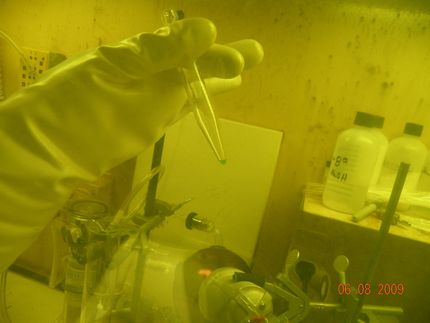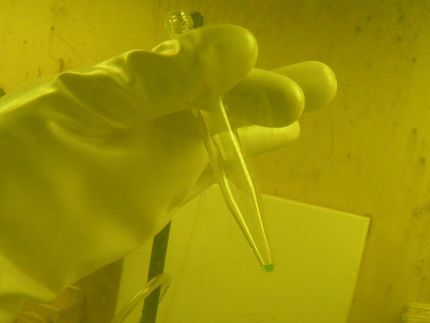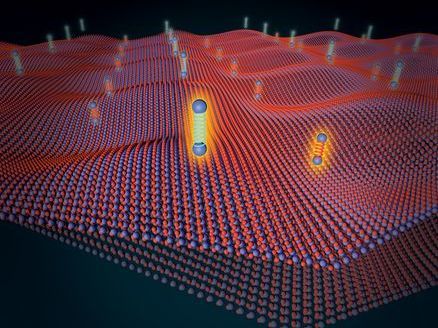Discovery and Assignment of Elements with Atomic Numbers 113, 115, 117 and 118
The 7th period of the periodic table of elements is complete
The fourth IUPAC/IUPAP Joint Working Party (JWP) on the priority of claims to the discovery of new elements has reviewed the relevant literature for elements 113, 115, 117, and 118 and has determined that the claims for discovery of these elements have been fulfilled, in accordance with the criteria for the discovery of elements of the IUPAP/IUPAC Transfermium Working Group (TWG) 1991 discovery criteria. These elements complete the 7th row of the periodic table of the elements, and the discoverers from Japan, Russia and the USA will now be invited to suggest permanent names and symbols. The new elements and assigned priorities of discovery are as follows:
Element 113 (temporary working name and symbol: ununtrium, Uut)
The RIKEN collaboration team in Japan have fulfilled the criteria for element Z=113 and will be invited to propose a permanent name and symbol.
Elements 115, 117, and 118 (temporary working names and symbols: ununpentium, Uup; ununseptium, Uus; and ununoctium, Uuo)
The collaboration between the Joint Institute for Nuclear Research in Dubna, Russia; Lawrence Livermore National Laboratory, California, USA; and Oak Ridge National Laboratory, Oak Ridge, Tennessee, USA have fulfilled the criteria for element Z=115, 117 and will be invited to propose permanent names and symbols.
The collaboration between the Joint Institute for Nuclear Research in Dubna, Russia and Lawrence Livermore National Laboratory, California, USA have fulfilled the criteria for element Z=118 and will be invited to propose a permanent name and symbol.
The priorities for four new chemical elements are being introduced simultaneously, after the careful verification of the discoveries and priorities. The decisions are detailed in two reports by the Joint Working Party (JWP), which includes experts drawn from IUPAC and IUPAP (the International Union of Pure and Applied Physics). These reports will be published in an early 2016 issue of the IUPAC journal Pure and Applied Chemistry (PAC).The JWP has reviewed the relevant literature pertaining to several claims of these new elements. The JWP has determined that the RIKEN collaboration have fulfilled the criteria for the discovery of element with atomic numbers Z=113. Several studies published from 2004 to 2012 have been construed as sufficient to ratify the discovery and priority.
In the same PAC report, the JWP also concluded that the collaborative work between scientists from the Joint Institute for Nuclear Research in Dubna, Russia; from Lawrence Livermore National Laboratory, California, USA; and from Oak Ridge National Laboratory, Oak Ridge, Tennessee, USA (the Dubna-Livermore-Oak Ridge collaborations), starting in 2010, and subsequently confirmed in 2012 and 2013, have met the criteria for discovery of the elements with atomic numbers Z=115 and Z=117.
Finally, in a separate PAC article the Dubna–Livermore collaboration started in 2006 is reported as having satisfied the criteria for discovery of element Z=118.
"A particular difficulty in establishing these new elements is that they decay into hitherto unknown isotopes of slightly lighter elements that also need to be unequivocally identified” commented JWP chair Professor Paul J. Karol, “but in the future we hope to improve methods that can directly measure the atomic number, Z".
"The chemistry community is eager to see its most cherished table finally being completed down to the seventh row. IUPAC has now initiated the process of formalizing names and symbols for these elements temporarily named as ununtrium, (Uut or element 113), ununpentium (Uup, element 115), ununseptium (Uus, element 117), and ununoctium (Uuo, element 118)" said Professor Jan Reedijk, President of the Inorganic Chemistry Division of IUPAC.
The proposed names and symbols will be checked by the Inorganic Chemistry Division of IUPAC for consistency, translatability into other languages, possible prior historic use for other cases, etc. New elements can be named after a mythological concept, a mineral, a place or country, a property or a scientist (see: W.H. Koppenol, PAC 74 (2002) 787-791). After Divisional acceptance, the names and two-letter symbols will be presented for public review for five months, before the highest body of IUPAC, the Council, will make a final decision on the names of these new chemical elements and their two-letter symbols and their introduction into the Periodic Table of the Elements.
"As the global organization that provides objective scientific expertise and develops the essential tools for the application and communication of chemical knowledge for the benefit of humankind, the International Union of Pure and Applied Chemistry is pleased and honored to make this announcement concerning elements 113, 115, 117, and 118 and the completion of the seventh row of the periodic table of the elements," said IUPAC President Dr. Mark C. Cesa, adding that, "we are excited about these new elements, and we thank the dedicated scientists who discovered them for their painstaking work, as well the members of the IUPAC/IUPAP Joint Working Party for completing their essential and critically important task."































































